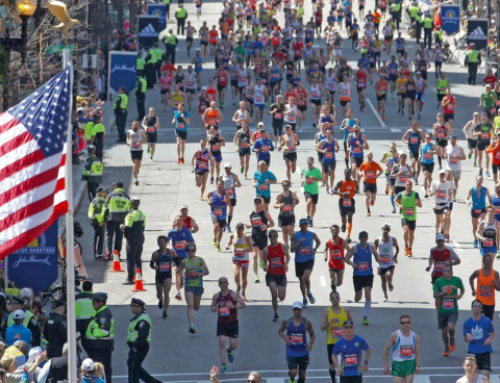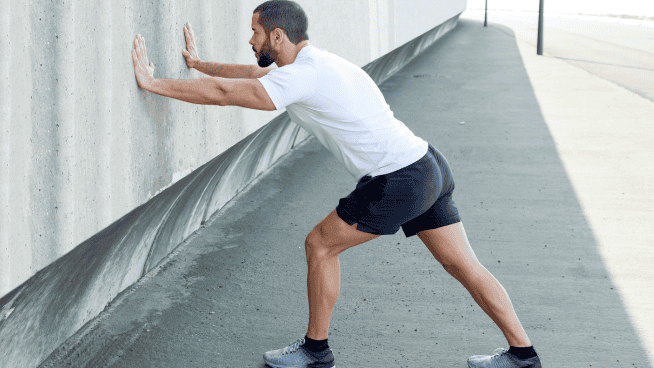The Secret to Training Gains: Less is More
I can’t tell you how many times I’ve wanted to offer my head up as a punching bag when I talk to young athletes about training. They complain that they can’t put on weight or get stronger, then proceed to tell me that their previous workout was a biceps and lower ab day.
Walk into Cressey Performance on any given day and you’ll see our athletes deadlifting, pushing sleds, cranking out Chin-Ups and using squat racks for their intended purpose—not performing Bicep Curls. They focus on the “big rocks” and don’t waste time on what I call “training minutiae.” To put it another way: they perform heavy multi-joint movements instead of training their beach muscles.
It’s inevitable that many of them sneak in some arm and ab work on their own time. But when they’re under my roof, they concentrate on the “big rocks,” because that’s what makes them bigger, faster and stronger.
The ‘Big Rocks Concept’
The story goes like this: A professor asks his students to fill a bucket with rocks, pebbles and sand. He places the big rocks in the bucket, then asks his students how to add the remaining items. Not surprisingly, the students place the pebbles and then the sand in the bucket. In the end, everything fits in the bucket.
The professor then asks his students to fill the bucket in reverse order. After pouring in the sand, the students realize that the sand alone fills the entire bucket and nothing else can fit.
“It is the same with time,” explains the teacher. “Give time slots to the big things before anything else. Otherwise, the inevitable sand will fill up your day.”
The Pareto Principle
The Pareto Principle (a.k.a. the 80-20 Rule) is named for Italian economist Vilfredo Pareto, whose work validates the concept of “big rocks.” He demonstrated in the early 1900’s that 80 percent of the wealth in Italy was owned by 20 percent of the population.
Since its inception, the Pareto Principle has been studied and applied to every facet of life. More often than not, it proves that a few activities (20 percent) provide the greatest return on investment (80 percent). For example:
- 20 percent of the crops a farmer plants result in 80 percent of the overall yield.
- 20 percent of a company’s clients account for 80 percent of its profit.
- 20 percent of the exercises you perform produce 80 percent of the gains.
Training Implications
To get results from your training, you need to embrace the concept of “big rocks” and spend most of your time performing a few exercises that offer the most bang for your clock. If you’re good at these movements, there’s a good chance you will be one of the biggest and strongest athletes on the field.
I get my athletes into the mindset of movement-specific workouts, rather than body-part specific workouts. For example, they will perform a “Deadlift day” (rocks) rather than a “hip/leg day” (sand), or they’ll do a “Chin-Up day” (rocks) instead of an “arm day” (sand).
Here’s an example of what a “Big Rocks” workout looks like:
Deadlift Day
- Full foam rolling and dynamic warm-up
- A. Trap Bar Deadlift – 4×5
- B1. Dumbbell Step-Up – 3×8 each leg
- B2. Push-Ups – 3×10 (band-resisted if needed)
- C1. Pull-Throughs – 3×10
- C2. Seated Cable Rows – 3×12
- D1. Pallof Press – 3×8 each side
- D2. Rotator Cuff Work – 2×10 each arm
- E. High-five someone x infinity
I recommend performing two to three additional workouts per week, emphasizing one primary movement each day (think: Deadlift, Bench variation, Chin-Up, Row variation). Follow with accessory work to complement the main movement and address glaring weaknesses or imbalances.
Avoid “fluffy” programs and exercises. Master the basics and good things will happen.
Read more:
[cf]skyword_tracking_tag[/cf]RECOMMENDED FOR YOU
The Secret to Training Gains: Less is More
I can’t tell you how many times I’ve wanted to offer my head up as a punching bag when I talk to young athletes about training. They complain that they can’t put on weight or get stronger, then proceed to tell me that their previous workout was a biceps and lower ab day.
Walk into Cressey Performance on any given day and you’ll see our athletes deadlifting, pushing sleds, cranking out Chin-Ups and using squat racks for their intended purpose—not performing Bicep Curls. They focus on the “big rocks” and don’t waste time on what I call “training minutiae.” To put it another way: they perform heavy multi-joint movements instead of training their beach muscles.
It’s inevitable that many of them sneak in some arm and ab work on their own time. But when they’re under my roof, they concentrate on the “big rocks,” because that’s what makes them bigger, faster and stronger.
The ‘Big Rocks Concept’
The story goes like this: A professor asks his students to fill a bucket with rocks, pebbles and sand. He places the big rocks in the bucket, then asks his students how to add the remaining items. Not surprisingly, the students place the pebbles and then the sand in the bucket. In the end, everything fits in the bucket.
The professor then asks his students to fill the bucket in reverse order. After pouring in the sand, the students realize that the sand alone fills the entire bucket and nothing else can fit.
“It is the same with time,” explains the teacher. “Give time slots to the big things before anything else. Otherwise, the inevitable sand will fill up your day.”
The Pareto Principle
The Pareto Principle (a.k.a. the 80-20 Rule) is named for Italian economist Vilfredo Pareto, whose work validates the concept of “big rocks.” He demonstrated in the early 1900’s that 80 percent of the wealth in Italy was owned by 20 percent of the population.
Since its inception, the Pareto Principle has been studied and applied to every facet of life. More often than not, it proves that a few activities (20 percent) provide the greatest return on investment (80 percent). For example:
- 20 percent of the crops a farmer plants result in 80 percent of the overall yield.
- 20 percent of a company’s clients account for 80 percent of its profit.
- 20 percent of the exercises you perform produce 80 percent of the gains.
Training Implications
To get results from your training, you need to embrace the concept of “big rocks” and spend most of your time performing a few exercises that offer the most bang for your clock. If you’re good at these movements, there’s a good chance you will be one of the biggest and strongest athletes on the field.
I get my athletes into the mindset of movement-specific workouts, rather than body-part specific workouts. For example, they will perform a “Deadlift day” (rocks) rather than a “hip/leg day” (sand), or they’ll do a “Chin-Up day” (rocks) instead of an “arm day” (sand).
Here’s an example of what a “Big Rocks” workout looks like:
Deadlift Day
- Full foam rolling and dynamic warm-up
- A. Trap Bar Deadlift – 4×5
- B1. Dumbbell Step-Up – 3×8 each leg
- B2. Push-Ups – 3×10 (band-resisted if needed)
- C1. Pull-Throughs – 3×10
- C2. Seated Cable Rows – 3×12
- D1. Pallof Press – 3×8 each side
- D2. Rotator Cuff Work – 2×10 each arm
- E. High-five someone x infinity
I recommend performing two to three additional workouts per week, emphasizing one primary movement each day (think: Deadlift, Bench variation, Chin-Up, Row variation). Follow with accessory work to complement the main movement and address glaring weaknesses or imbalances.
Avoid “fluffy” programs and exercises. Master the basics and good things will happen.
Read more:











